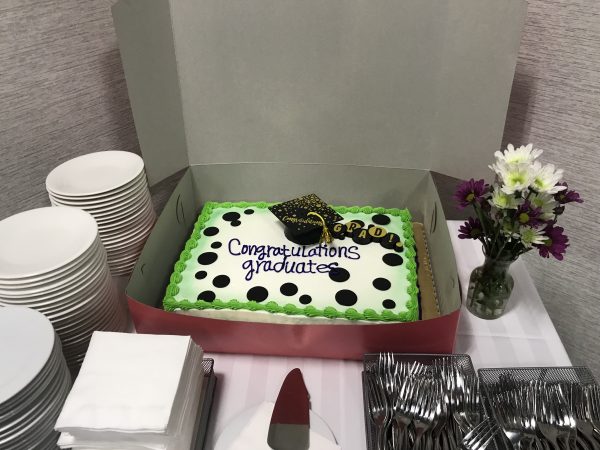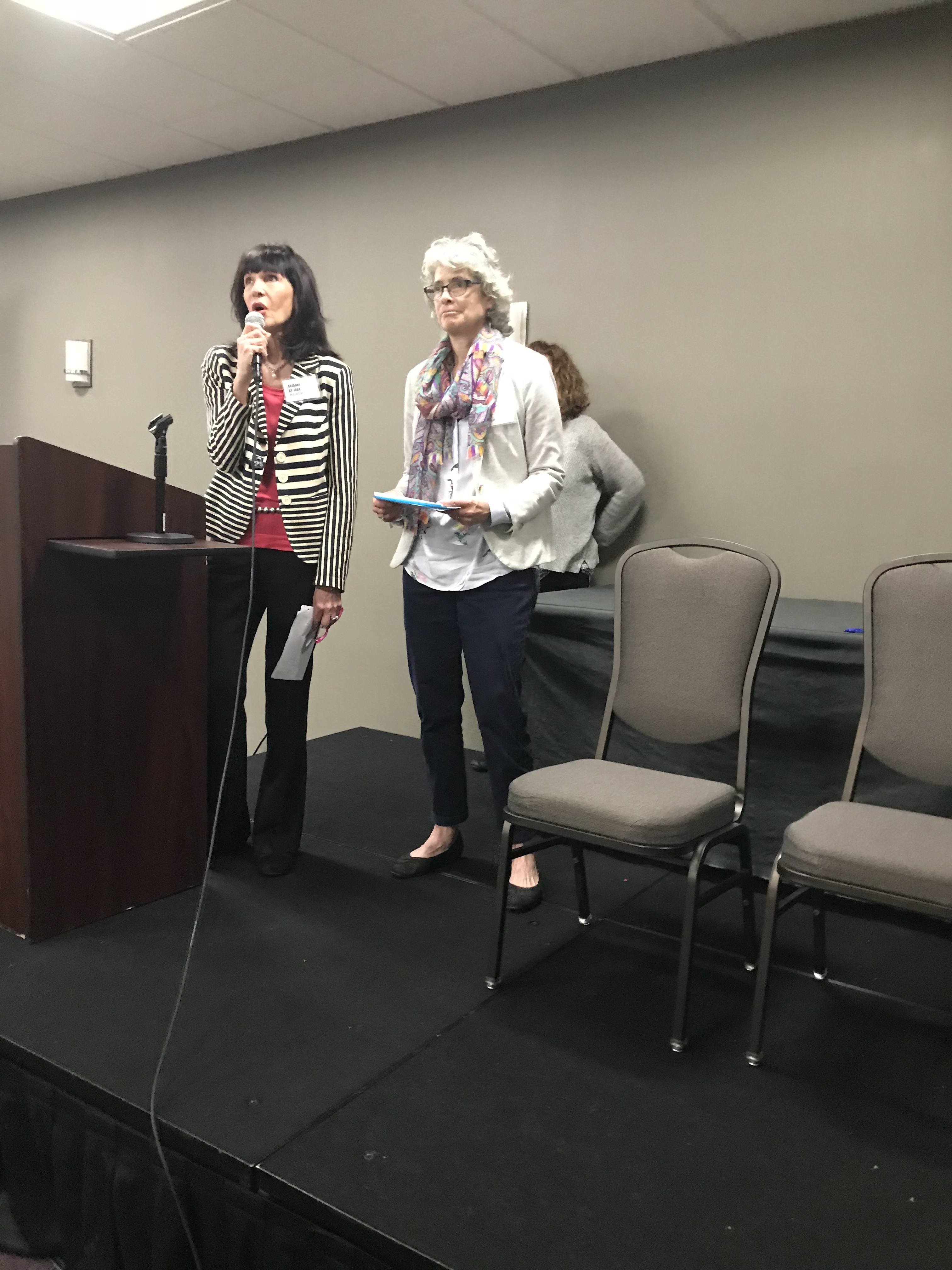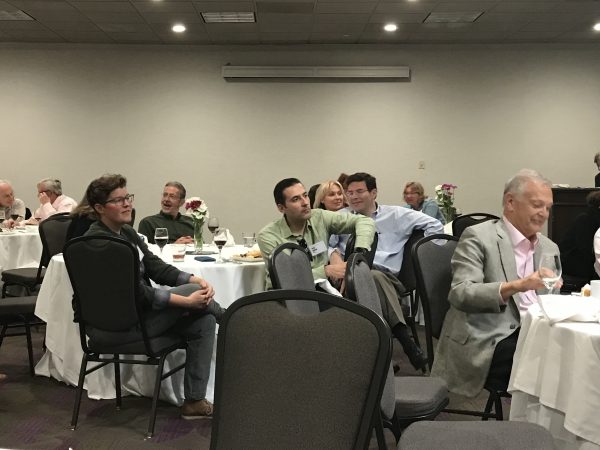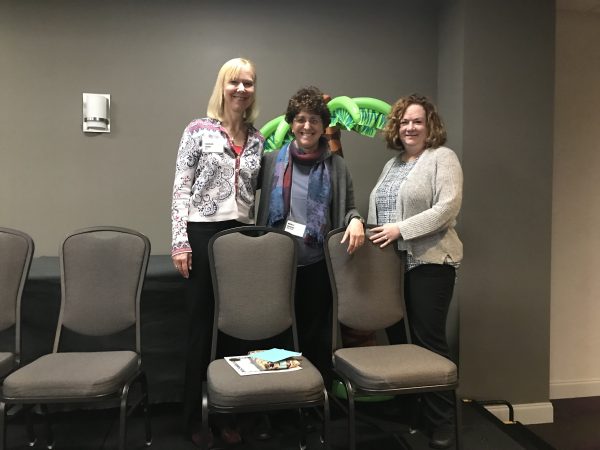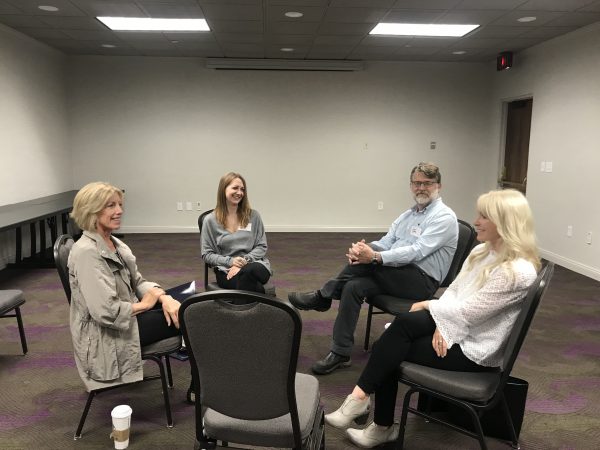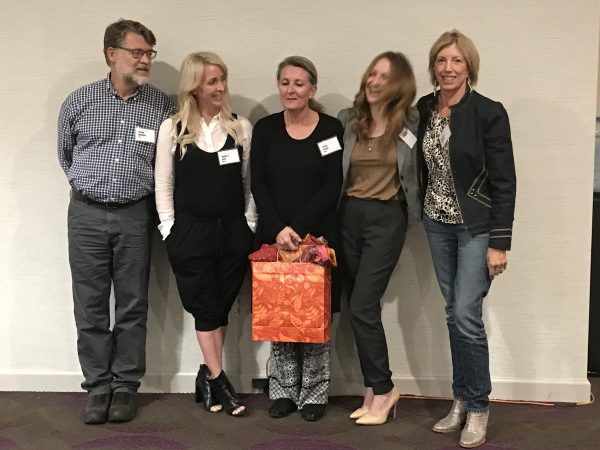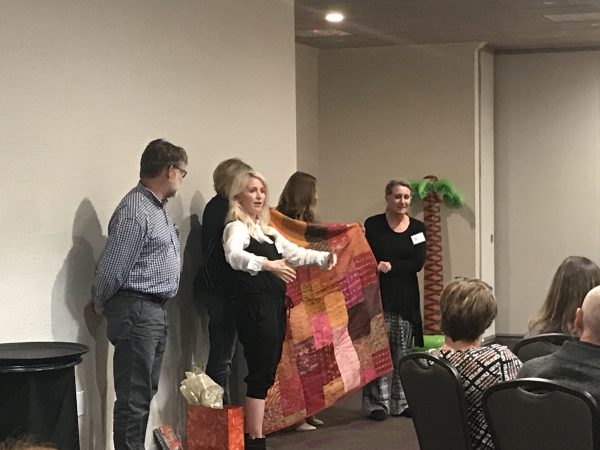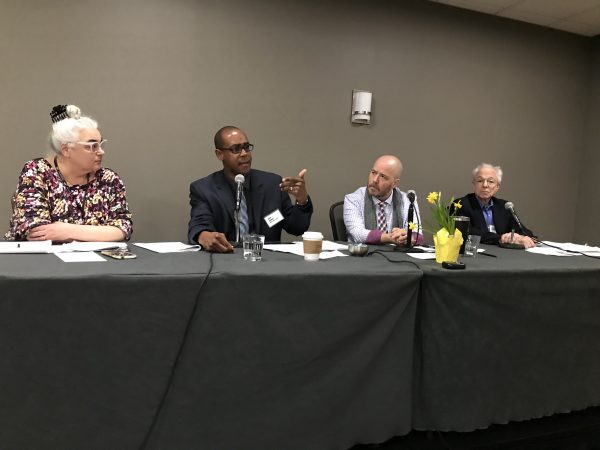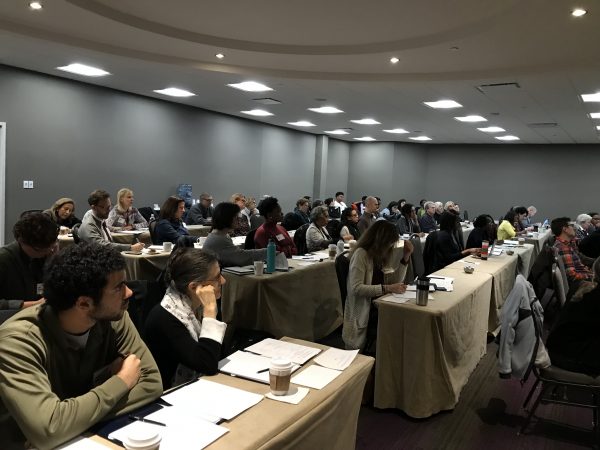In preparing to write this blog on our recent weekend exploring French Psychoanalytic thought and its contribution to understanding psychotic and borderline states, I found myself worrying about using too many “I” statements in my reflections. This urge to avoid writing “I” too many times in this composition, I think speaks to the theme and tone of this past weekend. Alain Gibeault described Freud’s theory of psychosis as de-cathexis from worldly objects and the psychotic terror of being engulfed or consumed by an object. Additionally, he discussed the concept of “the blank,” a space between matter and nothingness. We then watched a recording of an institutionalized patient, François, describe murdering an elderly woman, Jeanette, whom he had cared deeply for. He described Jeanette and himself being up on separate pillars with “something growing up between us.” I was struck by the terror of this image, being alone on a pillar, surrounded by the blank, with something terrifying growing up between François and Jeanette.
This material along with Dr. Gibeault’s discussion of psychodrama led into our small group discussions. During our group affective learning, fear and safety and their relation to individuals, patients, our group, and IPI were central themes. As the group went on, I felt myself feeling strangely disengaged and detached. Initially, I defended myself as bored. However, upon reflection, like François I was gripped by a psychotic fear of vulnerability, of being engulfed by the group or by IPI. I too, had in a sense de-cathected from the horror of the material and was existing in the blank.
I’d like to say that the psychodrama of our small group facilitated my re-cathexis with the material, but I found myself struggling to stay focused on Saturday as well. On Saturday afternoon, a colleague in the CORE program gave a fascinating presentation on a boy that he had been working with. The presentation was rich with symbolic meaning and beautifully captured the theme of terror of being engulfed that was running throughout the weekend. During one of the sessions presented, the boy was playing with a dollhouse. The presenter described this patient arranging the dollhouse in such a way that there was a “sealed off room, full of drawers” upstairs. For the second time during the weekend, I was struck by the rich imagery described by a patient. During plenary, themes of fear and violence were discussed. The ambivalence concerning feeling for and treating psychotic patients, like François, and recognizing the horror of the acts that they sometimes commit. Jill Savege Scharff brought up confronting gun violence, hate crime, toxic partisan politics, and climate change that are terrifying realities of our daily lives. It was during this dialogue that the image of the “sealed room, full of drawers” popped back into my consciousness.
I wonder if my feelings of detachment and the theme of unease that seeped into the weekend conference acted as a defense against the sealed room, full of drawers inside of all of us. I began to think of these drawers as full of rage, panic, lust, and violence, terrifying emotions/drives that are walled off inside me, but in reality would take little to provoke. In relation to my small group: would these terrifying affects/emotions kill my group? In relation to psychotic or borderline patients: does the fear of violence or panic in myself incline me to split them off as different and distance myself from them? In thinking about the didactic material or engaging with IPI: am I de-cathecting at times and existing in the blank in order not to experience frightening emotions? This weekend spent thinking about French psychoanalysis and psychodrama provided the opportunity to think about borderline and psychotic states and the terrifying moods and affects associated with those states as positions along a continuum on which we are all precariously perched.
Thomas Ringwood Jr., NP – 1st year student in 2-year Object Relations Theory and Practice Program (CORE) December 1, 201

